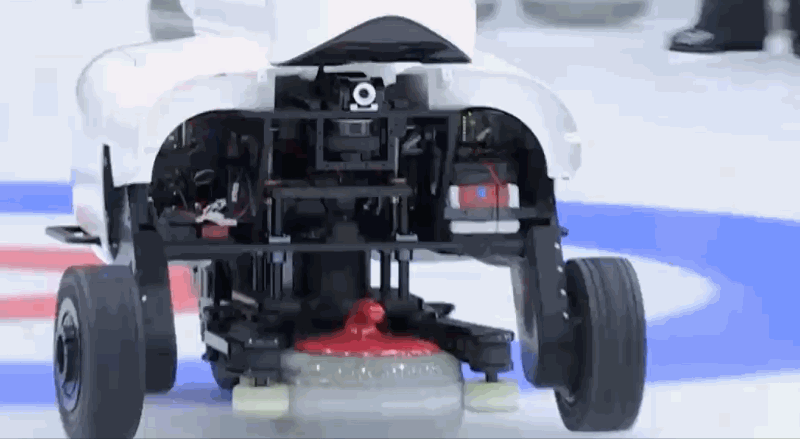Robots have shown themselves to excel at any number of sports and activities, though they do best when they have a single task. Fortunately some sports, such as curling, consist mostly of one task, and Korean researchers have made a robot that throws the stone well enough to compete at a national level.
If you’ve never gone curling yourself — first of all, for shame, it’s basically ice bocce and it’s very fun. But you may not know then that the principal action in the game is a simple but subtle one of gauging the power and angle (and spin, if you’re good) with which to slide a heavy kettle-shaped stone in order to get it near the center of a target, knock an opponent’s stone out of the way, or nudge another of your own into position. And that’s exactly what Curly the robot does.
The researchers, from Korea University in Seoul and the Berlin Institute of Technology, devised Curly as a way to test “the interaction between an AI system and a highly nonstationary real-world scenario.” In other words: A robot that can observe the real world and act accordingly in a precise and strategic manner.
Curly is actually a team of two robots, one of which observes the position of the stones at the scoring end while the other does the actual throwing. There’s no robot that sweeps the ice in front of the moving stone or yells “hard, hard!” but no doubt that is forthcoming.
The robots’ AI was trained entirely on computerized games, in which the stone and ice are physically simulated. One can see this type of training going well or poorly, depending on how accurate the simulation is. As it turns out, it works extremely well, giving Curly enough confidence that it only needs one throw at the beginning of each game in order to account for differing conditions like ice that’s more or less slick.
Its play is similarly impressive: Up against some of the country’s leading women’s teams and the national wheelchair team, Curly won three out of four rounds. One wonders whether permitting sweepers would change the outcome, but sufficient for the day is the achievement thereof.
The researchers point out that this is an important achievement not just because robots have been shown to be competitive in yet another sport, but because that sport involves fairly dynamic observation and decision-making in the real world and in real-time — the team can’t go retrain the network to deal with an unexpected setup. So it’s a win for both AI and robots in general, but also for the prospect of training such robots in simulated environments, which until fairly recently simply weren’t good enough to provide a reasonable facsimile of such complex physics.
You can read more about Curly and the complex AI and engineering that underpin it in the latest issue of the journal Science Robotics.





